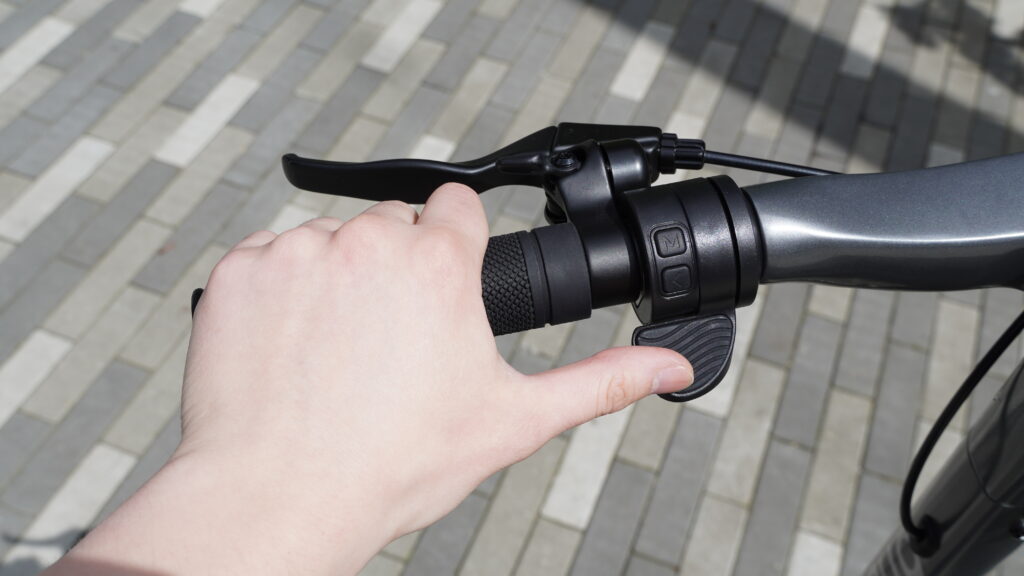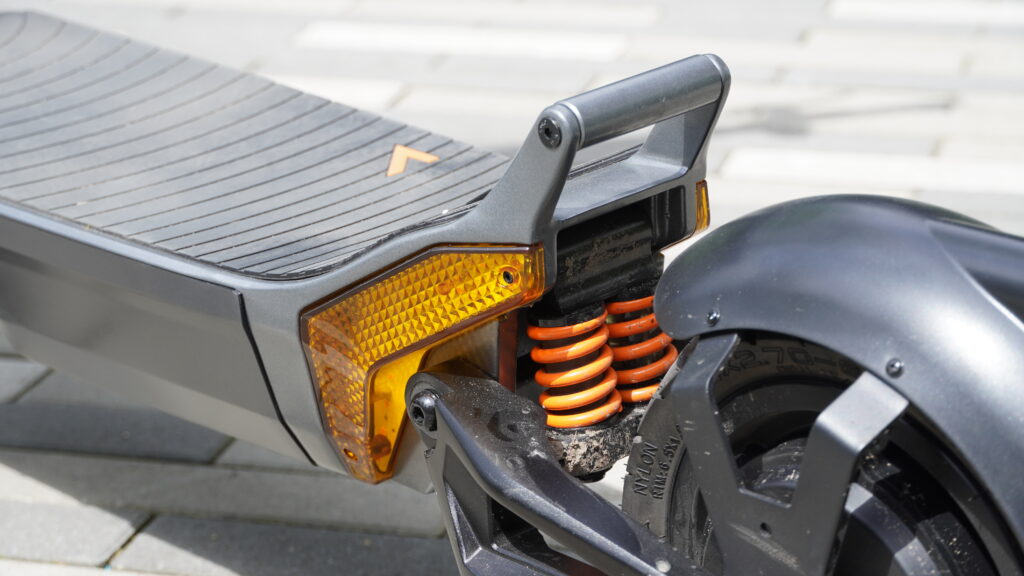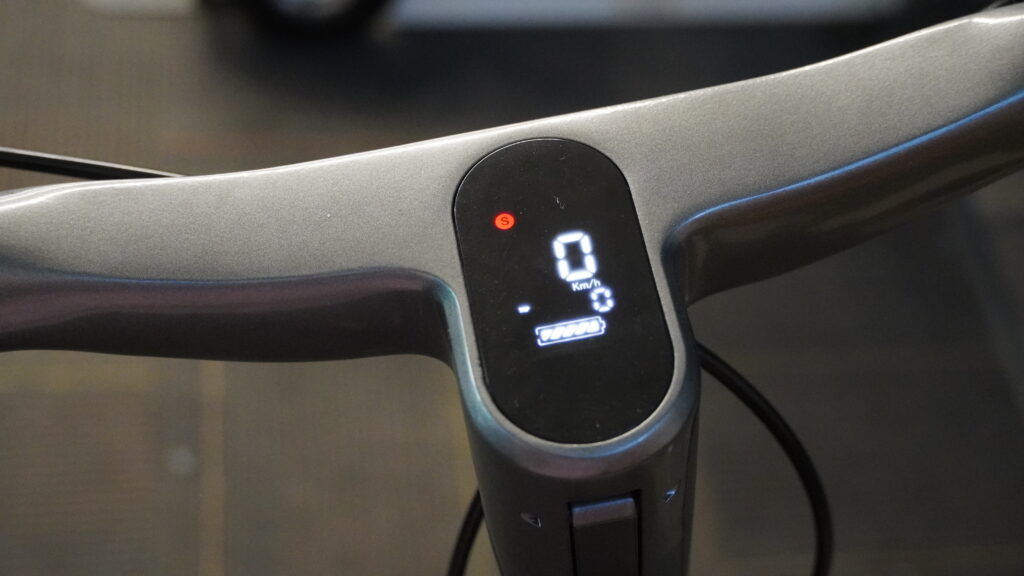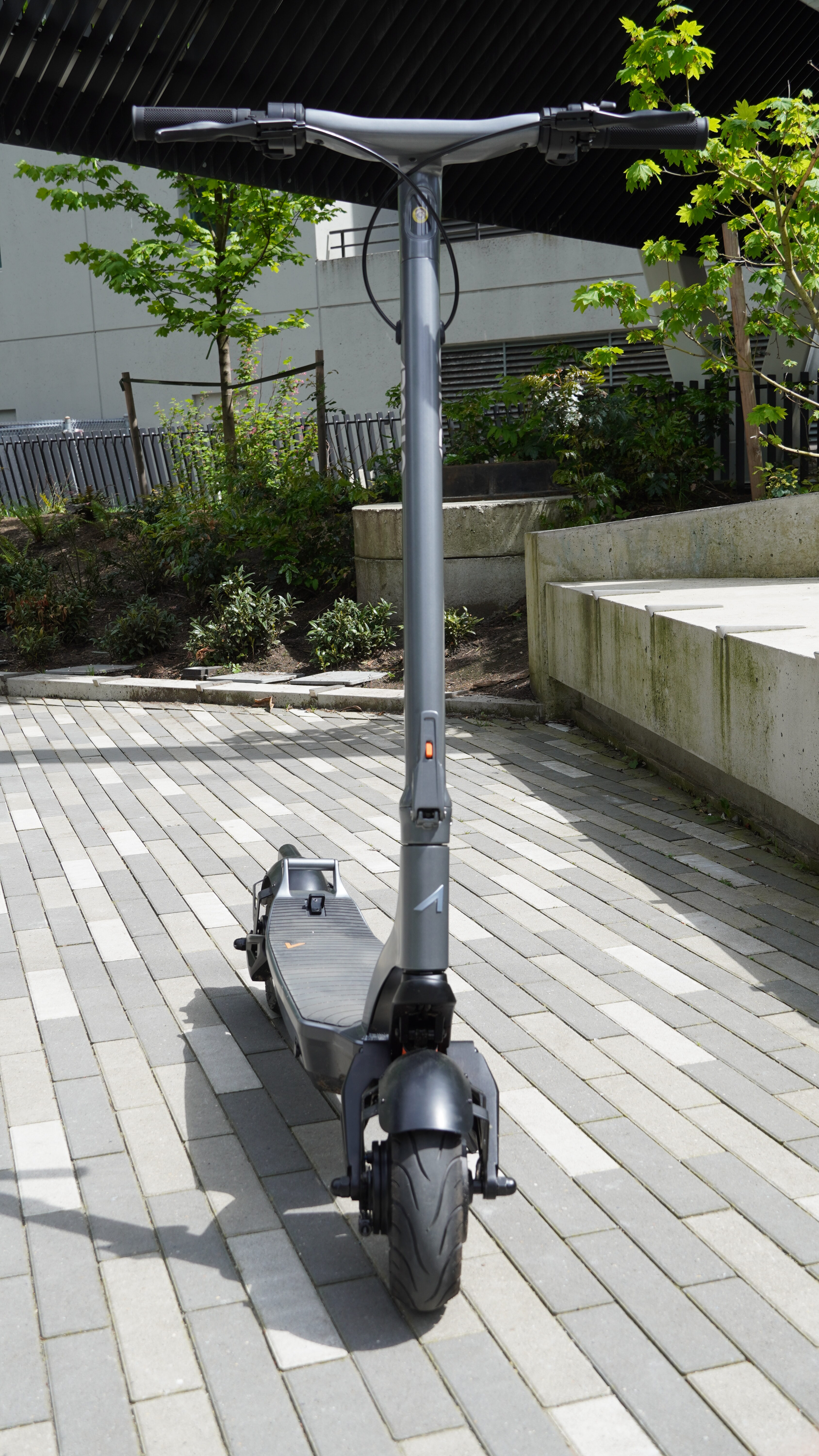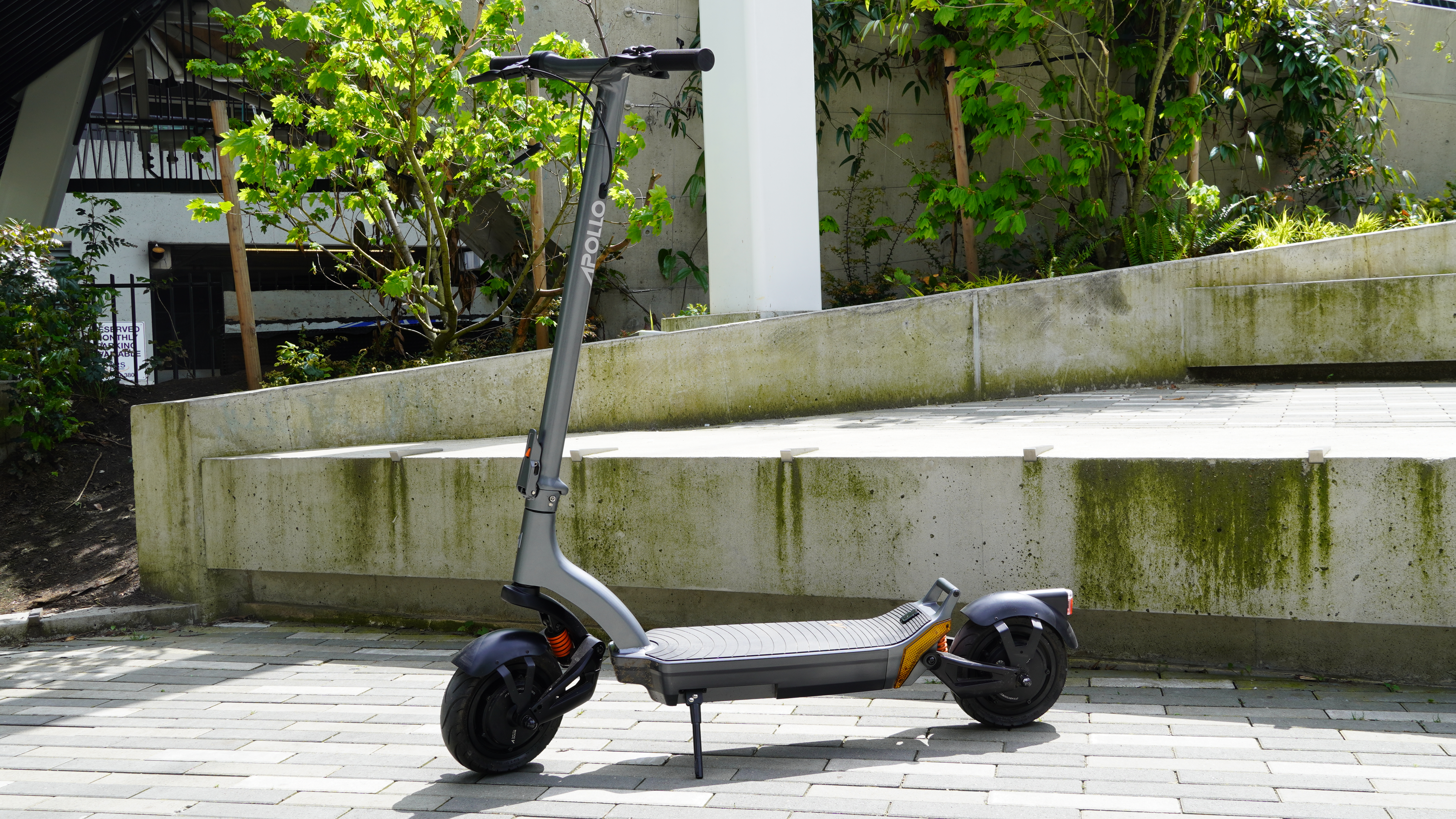
Apollo has made a name for itself as one of the most premium electric scooter manufacturers, creating micro mobile machines that don’t seem to skimp on style or substance. Marking the entry-level model in their commuter series of scooters is the Apollo City, but make no mistake; this isn’t a beginner scooter but an inner-city beast that packs a punch in performance. Find out if the Apollo City is the right electric scooter for you in Green Authorities’ in-depth review.
About this review: I tested the Apollo City for one week, totaling a distance of 55 Km. Apollo provided the electric scooter for review.
Table of Contents
What you need to know about the Apollo City
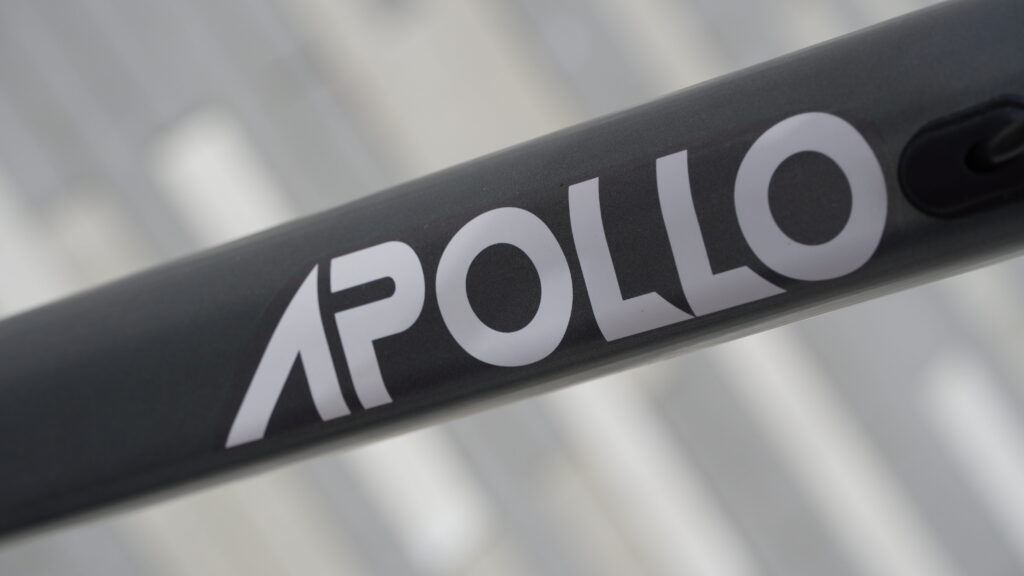
Price: $1,499 (Single Motor) / $1,699 (Dual Motor)
As the name suggests, the Apollo City is designed for people riding in the city. During the few times I took it off-road, the ride became quite bumpy over gravel, grass, and wood chips and pretty unstable and slippers through any mud. This is a commuter scooter meant for pavement. Still, while you can find commuter scooters with more range and higher top speeds in this category, you’d be hard-pressed to find any with as durable build quality.
The latest version of the Apollo City, released in 2022, features a complete redesign of its predecessor that is nearly unrecognizable. The scooter features a brand-new custom proprietary mold and is visually striking with a fresh coat of matte space grey paint instead of the old black and blue. It also sports some sharply angled swingarms around the front and rear dual-springs. The old 8.5 x 2″ pneumatic tires have been replaced with larger 10 x 3.5″ tubeless, self-healing tires that hold up better on the road.
There are three riding modes to switch between at the click of the power button. The default will max out at 20 km/hr; the second is Comfort mode which will raise the speed to a little more than half of what your top speed is set to, and Sports mode will max out top the maximum speed you have set within the app. It’s worth noting that you will need to sync the scooter with the app to adjust the top speed.
The Apollo City 2022 comes in single and dual-motor models, but the only differences are the motors, top speed, incline rate, and price. You get one or two 48V 500W motors, a top speed of 28 mph or 32 mph, a max incline of 10 vs 20 degrees, and a price difference of $200. I got my hands on the dual-motor version, which we’ll focus on for this review.
Design and build
Aesthetically, this scooter is definitely a head-turner and will stand out amongst the more budget-friendly options on the road. It’s the kind of scooter that lets people know this isn’t just for leisure or fun but something you have made a significant investment into for your daily commute.
Starting at the top, the wide handlebars are comfortable and feature intuitive controls. You have two hand brakes, a thumb throttle on the right, and an electronic regenerative braking throttle on the left. The regen brake noticeably isn’t as sharp as the two brake levers, so you’ll want to use those for stopping on short notice. Aside from that, there are buttons on either side of the cockpit to turn the scooter on or off, engage turn signals and headlight, and switch between the three riding modes, all within thumb’s reach.
The handlebars stick straight out, covered in rubber grip sleeves. Perhaps they aren’t the most ergonomic, but they are easy enough to hold. Sitting in the middle of the handlebars is a decently bright LED display seamlessly integrated into the aluminum mold. If I close my eyes and smoothly swipe my hand across, it’s hard to tell where the display starts and ends.
Going down the aluminum frame, the front headlight sits flush inside the stem and doesn’t stick out at all, and the 500-lumen light is bright enough for night riding. All the wires are tightly threaded into rubber openings around the Apollo branding down the side. The bottom deck is really where the style shines, however. It’s plenty wide with a nice rippled grip surface to plant your feet, and the rear sports an upswept carry handle that doubles as a rest to tuck your heel in for higher speeds.
The most eye-catching aspect, however, is probably the reflective turn signals which sit snuggly at the tail, wrapping around the sides and rear in a cleverly designed arrow shape. They blink when engaged and add a sense of safety when among cars. It can be hard to signal with your arms as when riding a bike since the balance on a scooter isn’t so stable one-handed.
What I liked
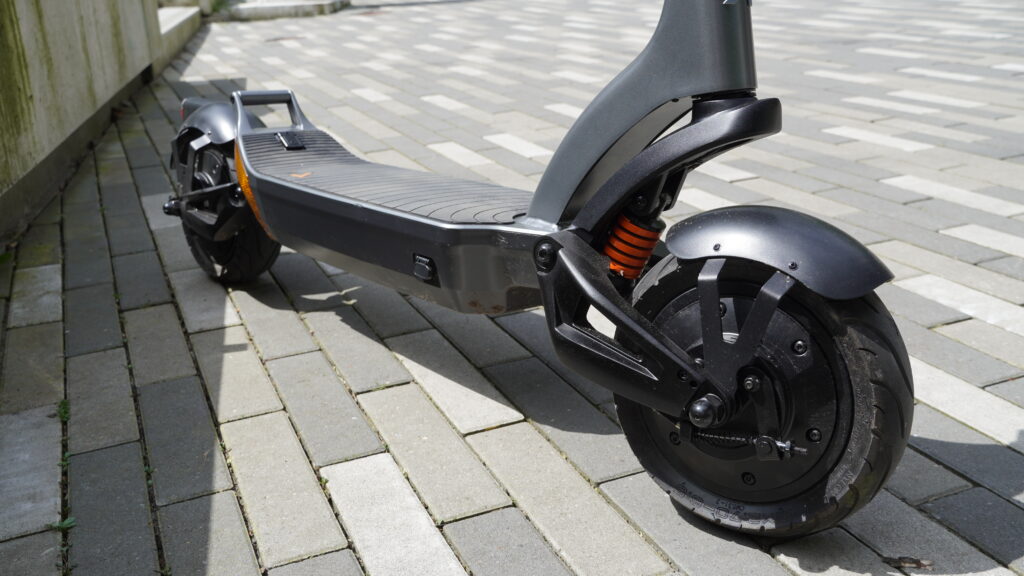
There is a lot to like about the Apollo City. Aside from the super cool design and quality materials, this is one of the best scooters I’ve ridden to date. To be sure, I haven’t tested every model on the market, but compared to popular options like the Segway Ninebot Max, this blows it out of the water. If I had to pick one thing I was most grateful for, it would be the dual-suspension springs and swingarm combos. There is a generous amount of shock absorption that you can feel rolling over any unexpected bumps or cracks on the road, and it feels smooth as butter over the urban terrain.
I also want to bring attention to the mobile app because it unlocks many features for the scooter that will improve the experience. Pairing the City via Bluetooth with the Apollo Scooters mobile app, available for both Android and iOS, you can adjust the strength of the scooter’s regenerative brake and acceleration, toggle its gears, cruise control, and kick-to-start function, and increase or decrease its top speed. Playing around with it, I found that a level two brake regen and a level six for acceleration are ideal in the City. The reason is that if the brake throttle is too high, a quick push of the thumb can be abrupt at high speeds. Likewise, too low an acceleration won’t let you get ahead of the pack of cyclists or fellow scooters.
Maxing out that top speed for when you want to switch into Sports mode was convenient when entering traffic or approaching a steeper incline. I was able to push it to 50km/hr on occasion, which you should definitely wear a helmet for. On that note, I barely noticed any slowing down in speed when going uphill, sometimes a couple of km/hr but nothing drastic.
On top of that, the app has a built-in navigation system. It keeps track of your rides so that you can monitor all the analytics, such as average speed, battery consumption, motor temperature, distance, and more. For safety, there’s also the option to enable a digital lock that causes resistance when pushing the scooter.
As for charging times, Apollo has cut them in half since compared to the older version of the City. It only takes roughly four hours for a full charge compared to the previous eight, which is pretty impressive. That’s primarily thanks to the new discharge 21700 lithium battery. A single charge will also get you 25 miles (60 km ) of range, which is plenty for inner-city trips. Apollo ensures more than 600 battery charge cycles, which will take some time to put to the test.
What I didn’t like

As I mentioned in the first section of this review, this scooter doesn’t handle very well on anything but pavement. To be fair, it is called the City and is intended for city riding. But still, sometimes, I like to cut across the grass between sidewalks to shave off some time on my commutes. While the suspension is excellent, going over grass, woodchips, or bits of gravel can get pretty bumpy. On one particular occasion, when I was eager to take the scooter out after a recent rainfall had cleared up, I encountered some slick mud hiding beneath the grass, which became quite slippery. I had to quickly hop off so as not to crash, but I didn’t avoid the big brown splashes of dirt.
After that experience, I did receive a flat rear tire, likely from a sharp rock. But this was a good chance to test the so-called “self-healing” aspect, and to its credit, it did just that. After pumping some air into it and ensuring the cap was sealed, the gel line inside the tire did the rest of the work and sealed the puncture within a few minutes. Still, take it from me and stick to the pavement for your trips, just to be safe.
While not riding, the scooter is easy to push with the motor assistance enabled but is pretty heavy to carry, weighing just under 58 lbs. It doesn’t help that the folding hook is loose and tends to fall out of the latch on the deck when folded, either. This isn’t a problem when lifting, but the whole thing can swing open while carrying. If you have an elevator in your building or the space, it’s better just to roll it until you get on the road and fold it only for storage, not transportation.

Additionally, depending on the surface, the kickstand was more or less reliable. For flat surfaces, such as concrete or hardwood, the scooter had no problem standing upright. But for carpeted surfaces, it had a habit of falling over. I would have preferred if Apollo had given the kickstand a larger footing and more of an angled lean.
Quick Specs
- Motor: 500W
- Battery: 48V 18Ah
- Top Speed: 32 mph (52km/hr), but can unlock higher speeds with the app
- Range: 30 miles (60 km)
- Weight: 68 lbs
Should you buy the Apollo City electric scooter?
If you want a purpose-built scooter for city riding, you can’t do much better than the Apollo City. So far, with my time riding it, I’ve found it to provide the best overall balance between performance and features for urban commutes, though it does come at a higher price tag. You will get your money’s worth with durable build quality and low maintenance. Unlike the majority of scooters in the commuter space, the City is one of the few that depart from the OEM production model to deliver something designed in-house from the ground up.
If you value premium materials, a sleek and unique design, and an intuitive user experience, both in the app and on the display, the Apollo City delivers on all fronts. Some of the smaller touches under the hood also go a long way, such as the fast charging and battery management to protect the battery pack from damage and prolong its lifespan. However, if all you need is to get from A to B without the luxuries of turn signals and a mobile app, you could probably make do with a cheaper model.
Some might be quick to point out that this isn’t the fastest scooter, nor the scooter with the most range in this price bracket. However, I think the design, quality materials, and features more than make up for it in terms of value. Also, the speed and range are plenty sufficient for navigating daily commutes. When it comes to choosing an electric scooter for inner-city trips, the Apollo City 2022 is the king of the urban jungle.
